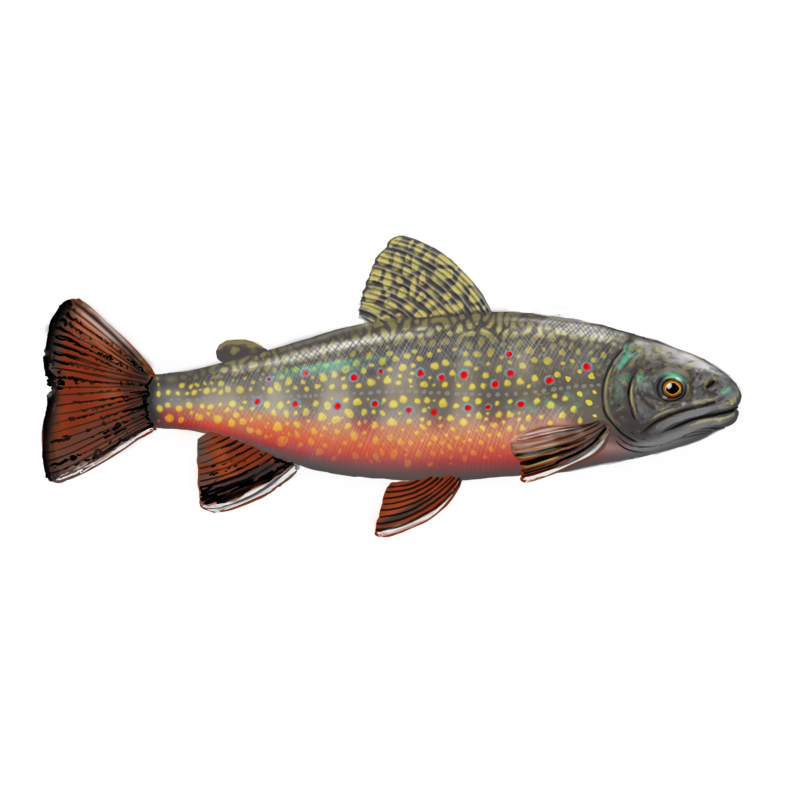
SIZE:
15 cm to 32 cm, up to 55 cm.
LIFE EXPECTANCY:
3 to 5 years; record of 15 years.
LIFE CYCLE:
Sexual maturity is attained around 2 or 3 years of age.
Spawning takes place between late summer and autumn, when temperatures drop below 10 °C.
The number of eggs produced by a female depends on its weight. The eggs are deposited on a gravel bed that is well oxygenated by the current. The male fertilizes the eggs immediately, and the female covers them. The eggs will develop over winter. They hatch after 50 to 100 days, depending on the water temperature.
Teamwork
Brook trout live in family groups and work together to find food. The secret of this strong social bond? Chemical signals that are emitted by molecules present in the mucus that covers each individual.
The brook trout has a stocky, rounded head, a compressed body covered with tiny scales and a long, slightly forked tail.
Its wide mouth reveals a collection of teeth on its jaws, as well as on its palate and tongue. The lower jaw takes on the shape of a hook during the breeding season.
Its back is dark green and is adorned with marbling. Brook trout turns silvery in salt water. Its flanks are marked by a series of orange-red spots rimmed with blue. The male has a bright orange belly. The ventral fins are highlighted by two contrasting bands of white and black.
Mainly found in the fresh, well-oxygenated waters of streams, rivers and lakes.
Its habitat varies throughout its life. It is an anadromous fish.

In eastern Québec, in rivers presenting no major obstacles, these fish can migrate to salt water to grow for a time. It then returns to fresh water to reproduce.
Credit: Jean-Christophe Lemay, photo taken in the Rivière Neigette, Rimouski, in 2018.
PREYS:
Invertebrates
Fish
Larvae
Insects
PREDATORS:
Eels
Pikes
Otters
Mink
MACHINES:
Gillnet, fly fishing, line fishing.
REGULATIONS:
Brook trout is mainly a sport-fishing activity. A fishing permit is required.
The sea version of brook trout, also known as sea trout, is fished commercially on the lower North Shore.
Québec is home to some 700,000 brook trout anglers. More than half of the brook trout populations are overfished.
Brook trout is one of the species targeted by aquaculture. It is mainly intended for the reseeding of natural environments and sport-fishing areas.
BENEFITS:
Brook trout is an excellent source of omega-3 fatty acids, protein, and vitamin B12.
LET’S COOK:
Its texture is semi-firm and tender; orange-pink flesh with a delicate, refined flavour. Brook trout can be prepared in a variety of ways: smoked, dried, grilled, breaded, etc.
OUR CULINARY ADVICE:
- Cook quickly in the oven at a high temperature to prevent the trout from drying out.
- When pan-fried, the fish is cooked when the flesh flakes easily with a fork.
- Keep the head and bones to make fish stock for chowder.





